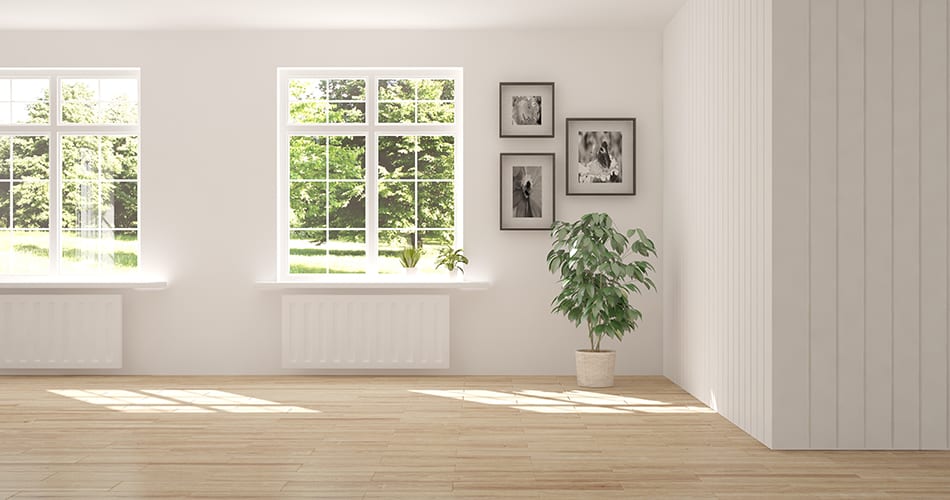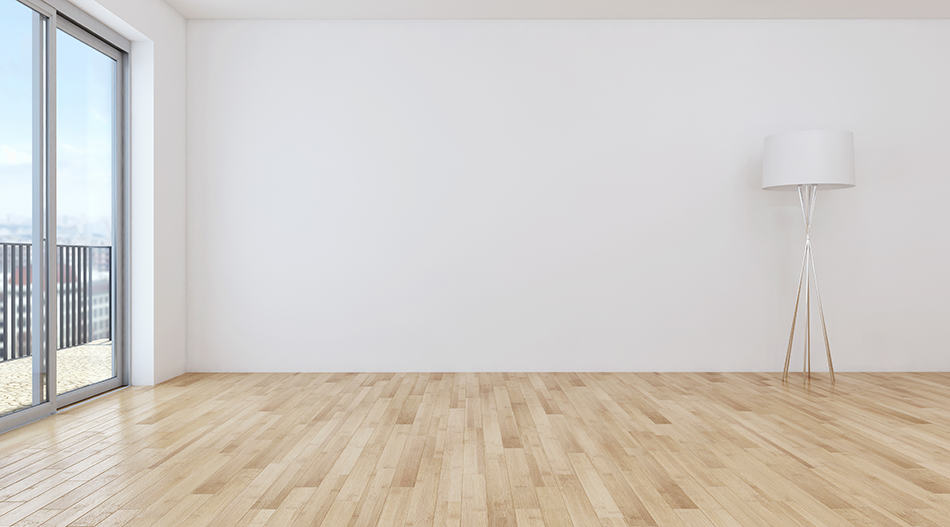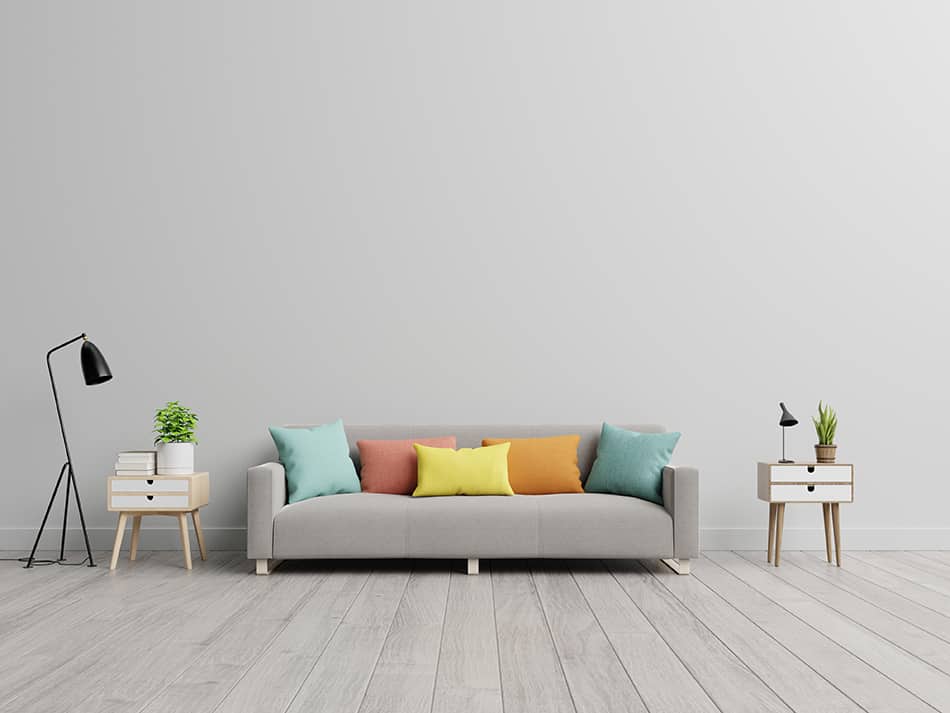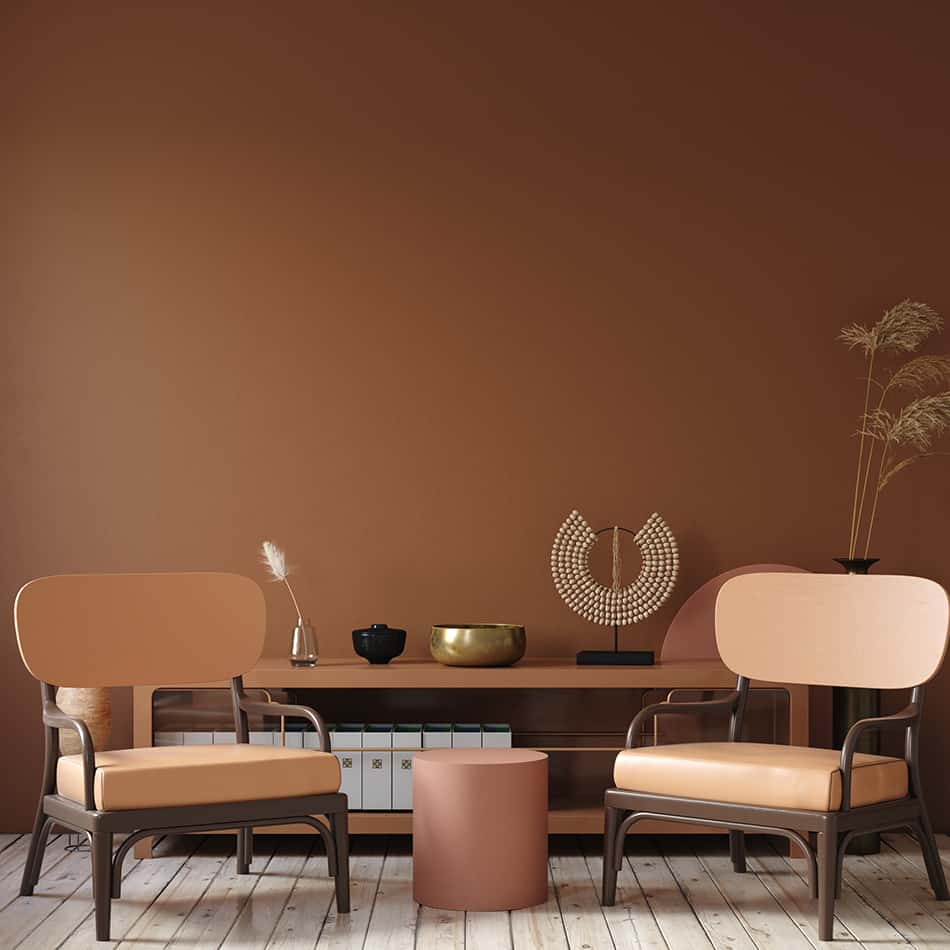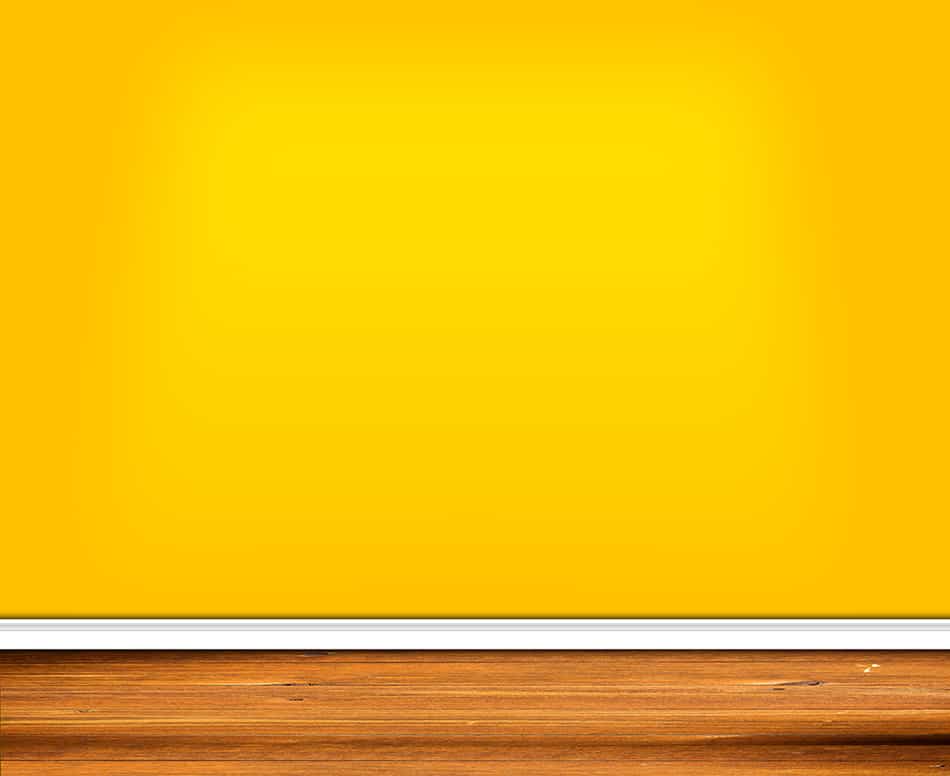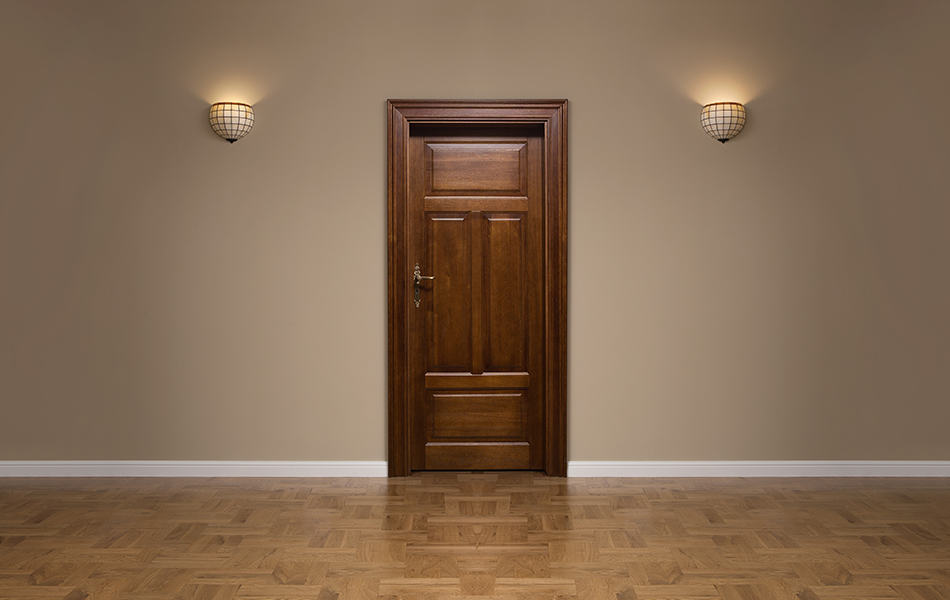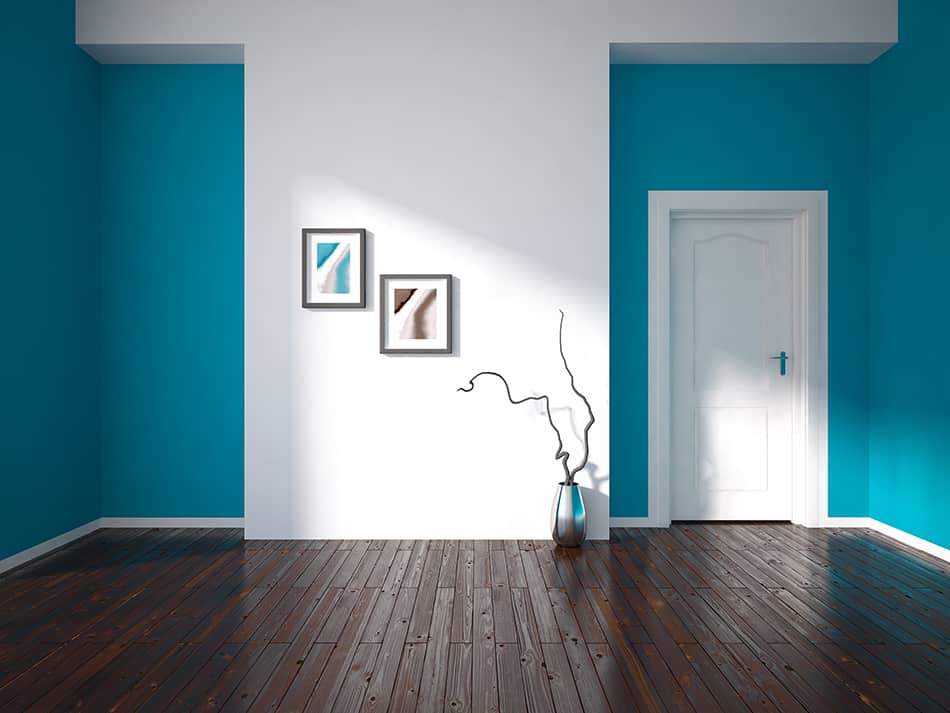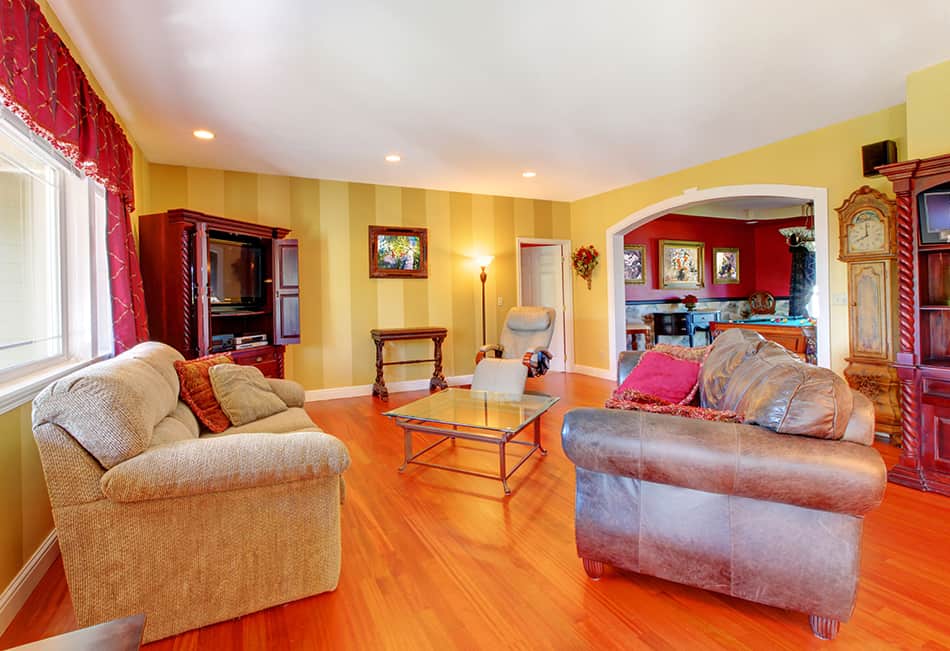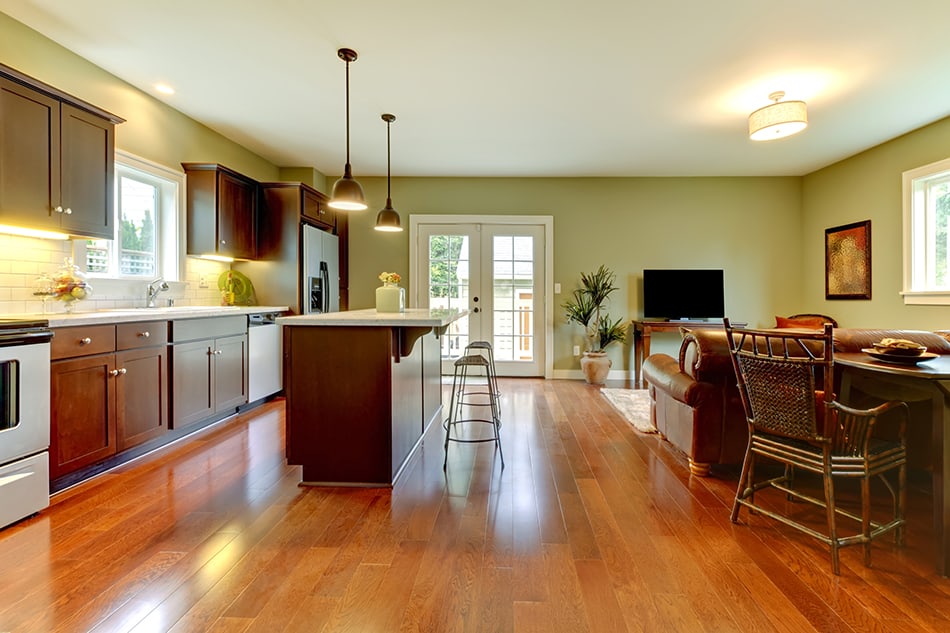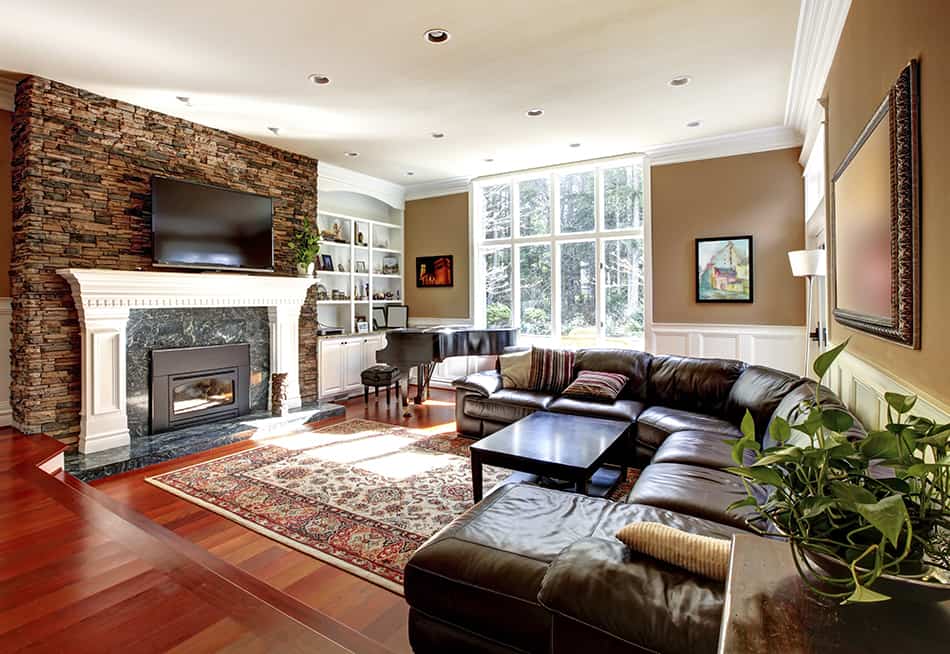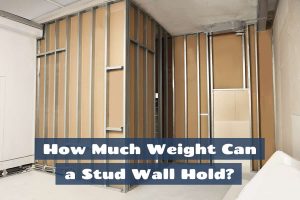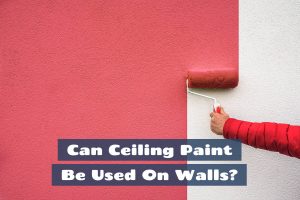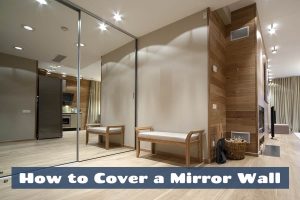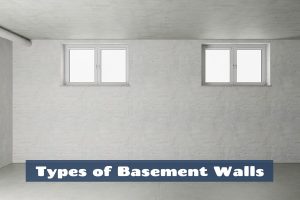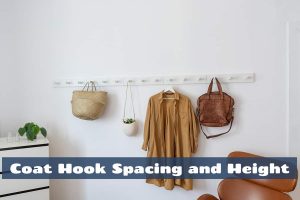When it’s time to redecorate your interiors, a fresh coat of paint on the walls is the first thing that comes to mind before the floor color. It is often a good idea to start with the walls and then the flooring, as these two act as the base for the overall color scheme.
Since wooden flooring is the most common option, it is important to paint your walls a suitable color to coordinate with your floors. Wooden floors come in light and dark tones in matte and textured variations.
It is, therefore, important to pick the right flooring and wall color combination to keep your space balanced and cohesive. In this article, let’s take a look at our suggestions for the best wall paint colors that go with different wooden floor colors:
Wall Colors for Light Wooden Floors
White for a Modern Feel
White is a classic color and a popular choice for interior walls. This is one of the most versatile colors that go with any wooden flooring. With lighter floors, you can paint your walls in a semi or high-gloss finish to create an inviting vibe.
If you’re not a fan of bright white walls, tone it down using an off-white paint color. The light wall and light wooden floor color combination will create a bright and airy atmosphere in your living spaces.
Gray for Depth
Aside from bright white walls, a softer color to consider is a light shade of grey that goes with light wooden floors. Grey paints come in warm and cool tones.
Choose light to medium grey depending on the undertone of your wooden flooring. Charcoal grey walls, for example, look stunning with white or grey hardwood flooring. If you opt for the same paint color palette for the floor and walls, choosing one or two shades lighter is best to not make the room appear dull or monotonous.
Keep in mind that a room in direct sun exposure will have wall colors appear lighter while a room in northern exposure will have darker walls.
Light grays walls are the best paint colors to match cool-toned light wooden floors, while medium shades of grey pair well with warm-toned light wooden floors.
Dark Brown for Contrast
Add dimension to a small room for a more dramatic effect by contrasting your light wooden floors with dark neutrals, such as chocolate brown.
This wall paint color will look striking with both cool and warm-toned light wooden floors as shown here. You can also match your light wooden floors with walnut or oak brown walls.
Wall Colors for Dark Wooden Floors
Bright Yellow
Dark wooden floors can appear overwhelming in a large space. However, when plenty of natural light comes into the room, dark wooden floors will feel comfortable and easy on the eye. In fact, dark brown hardwood floors in open floor design layouts will make the room feel a little cozier.
When paired with a bright shade of yellow, the two-color combos will make a statement. Before proceeding with painting your walls, make sure you check the wall paint’s tone first. For example, warm yellow tones work best with dark brown floors. Experiment with yellow hues to see which pairs best with your flooring.
Beige for Contrast
Beige is a typical wall color that helps create contrast with dark wooden floors. While white also offers neutrality, it can look a little dull next to dark floors. If your wooden floors have a tinge of a reddish hue, opt for a warm beige as this is a great alternative to white.
Beige has the ability to transform bland walls into elegant interior spaces as this color has a creamier tone that emits warmth. So if you want to create an inviting atmosphere, consider painting your walls beige and going for dark wooden flooring.
This color combo will balance the richness of dark wood and enhance the undertones of beige and brown to make the floor appear brighter.
Beige walls and dark brown floors work well in a wide range of interior design settings, including contemporary and rustic-style homes.
Cool Colors
Cool wall colors complement dark wooden floors, from violets and icy blues to greens and purples. To make sure your cool wall color coordinates with your dark flooring, pay attention to the undertone of the wood.
For example, add blue to complement the red if your floors have a reddish hue. Dark violet is another great wall color that mixes well with chocolate brown floors. On a similar note, medium-toned aqua walls work with orange hardwood floors. These are perfect wall and floor color combos that help add a pop of color to any room.
Other cool wall colors like bluish-grey and greyish green will refresh the space and brighten the room. Depending on the style of your home, you may even opt for jewel tones for the walls, as these pair well with dark brown floors.
For traditional interiors, dark purple walls go perfectly well with dark brown floors, creating a rich and formal look.
The bright blue wall looks beautiful next to the dark brown wooden flooring. This color combo works particularly well in bedrooms.
Wall Colors for Cherry Wood Floors
Bold and Bright
Cool wall colors complement dark wooden floors, from violets and icy blues to greens and purples. To make sure your cool wall color coordinates with your dark flooring, pay attention to the undertone of the wood.
For example, add blue to complement the red if your floors have a reddish hue. Dark violet is another great wall color that mixes well with chocolate brown floors. On a similar note, medium-toned aqua walls work with orange hardwood floors. These are perfect wall and floor color combos that help add a pop of color to any room.
Other cool wall colors like bluish-grey and greyish green will freshen the space and brighten the room.
Depending on the style of your home, you may even opt for jewel tones for the walls as these pair well with dark brown floors. For traditional interiors, dark purple walls go perfectly well with dark brown floors, creating a rich and formal look.
Here, the bright blue wall looks beautiful next to the dark brown wooden flooring. This color combo works particularly well in bedrooms.
Pastel Green
Cherry wood floors deserve to be highlighted in a modern kitchen. To avoid using a wall color that clashes with your cherry wood floors, go for a pastel green shade.
Greens and cherry wood colors are considered to be complementary hues that create striking contrast in a kitchen or living room.
Harmonious Brown
Brown is one of the best wall colors for creating a monochromatic scheme with cherry wood floors. In interior design, monochromatic colors tend to tone down darker shades so you can go either one shade lighter than your floor or one shade darker.
For example, if your cherry wood floors have a reddish tinge, go with medium-toned brown walls to make your living room space inviting and warm.
With its reddish cherry wood flooring and brown walls, you can see how warm and welcoming this living room looks.
Should Walls Be Darker or Lighter Than Floors?
Most interior designers will tell you that floor colors should ideally be darker than the walls. However, this rule applies when one wants to make their room appear larger by using lighter walls and darker floors.
Since most homeowners prefer spacious-looking interiors, it is understandable that they opt for such a color combo.
To make a visual impact, it makes sense to coordinate your wooden flooring color with your walls. Dark floors stand out most against light walls like white or beige, as these neutrals help brighten up the room.
Floors and walls in different color tones tend to stand out as features of the room. When your walls are light, they tend to make the room feel bigger. Similarly, if your walls are dark, they bring down the ceiling height and make the room feel smaller.
Deciding on darker or lighter walls will depend on whether you want to create a more expansive space or a cozy effect. Keep in mind that very dark or light flooring tends to show dust easier than medium-toned wooden floors.
But ultimately, it is up to you to decide how light or dark you want your walls to appear next to your floors.
